With 52,000 farms and 7.3 million acres of farmland, agriculture is huge in Pennsylvania. The state sees $83.8 billion in direct economic output and $10.9 billion in earnings. Not to mention the 280,500 jobs that the farming industry provides. Find out Pennsylvania’s top 10 most valuable crops and why they generate so much income.
#10. Oats
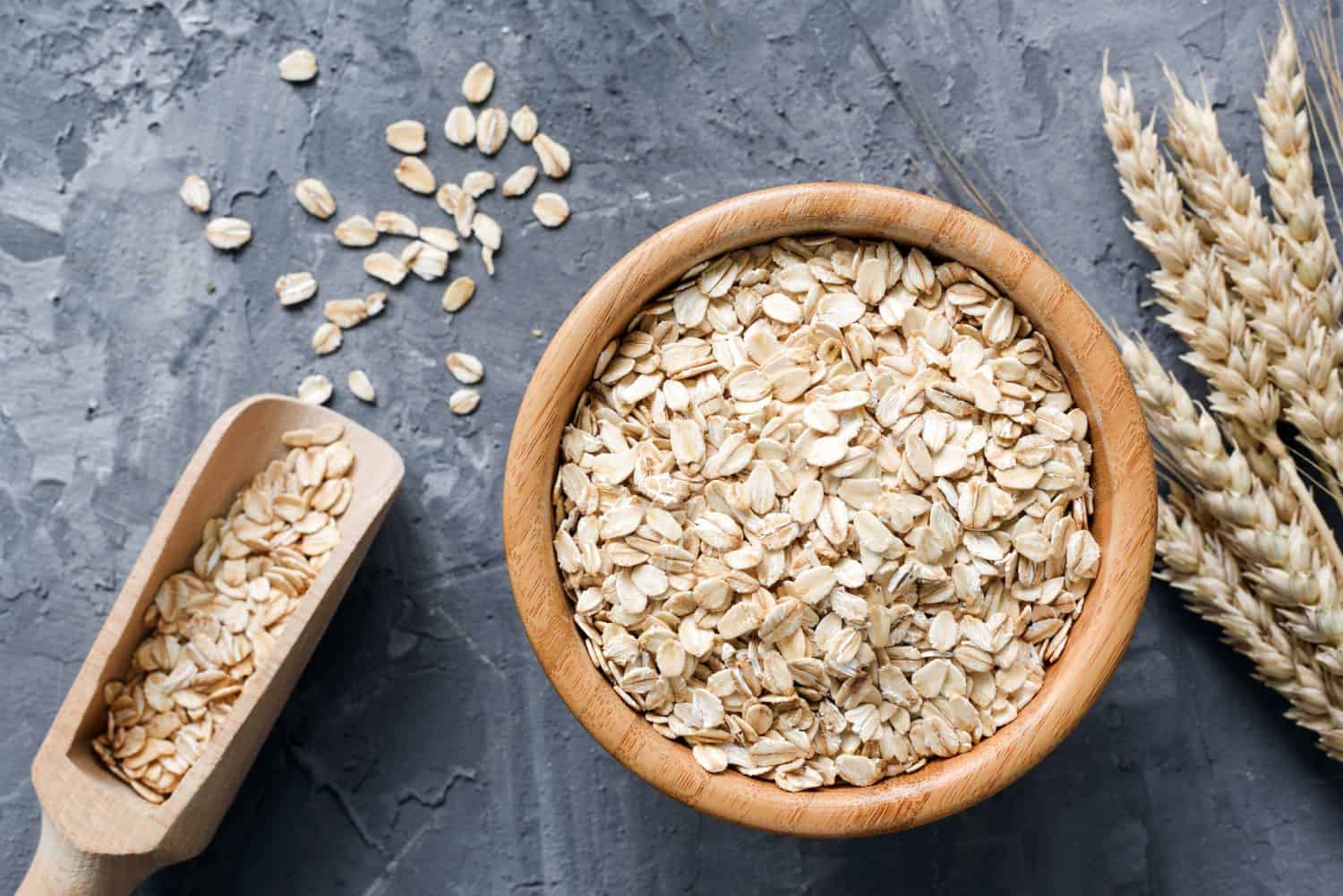
Oats are cool-season crops typically grown in northern U.S. regions and the Midwest.
©Vladislav Noseek/Shutterstock.com
Pennsylvania ranks 5th out of all the states in oat production. In 2022, the state grew 3.6 million bushels. This crop produces about $9.6 million a year for Pennsylvania.
Oats are a popular cool-season grain. It grows quickly during the fall, and farmers utilize oats as “nurse crops.” Nurse crops are annual crops used to help establish a perennial crop. In the case of oats, they provide soil coverage and nutrient-trapping benefits. Plus, when temperatures dip below 10°F, the oats die and become maintenance-free mulch.
#9. Barley
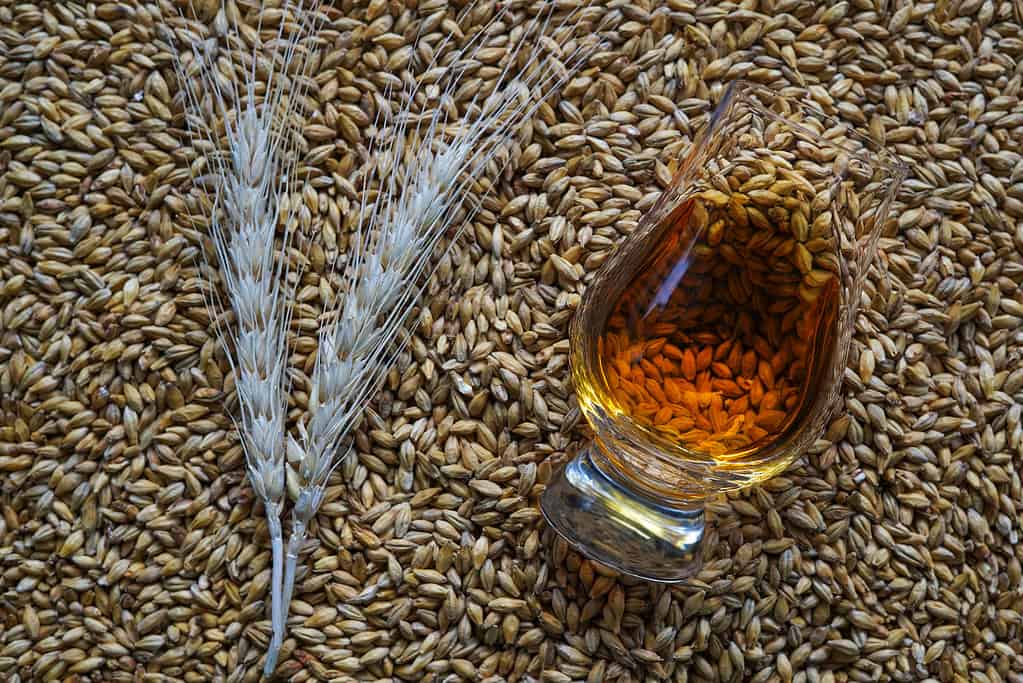
Malting is the process of converting barley or other cereal grains into malt for use in brewing, distilling, or foods.
©13threephotography/iStock via Getty Images
Pennsylvania produced 1.34 million bushels of barley in 2022. Annually, barley brings in about $10.1 million. Some of this is for feed barley, but a growing demand for malting barley makes it one of Pennsylvania’s top most valuable crops. The barley crop must meet strict quality criteria before brewers use it in malt production. Several barley varieties grown in Pennsylvania have been successfully used for malting. Therefore, there is growing demand for this crop, especially for the local craft beverage industry.
Barley is also a useful cover crop in the state. It maintains soil quality, prevents erosion, controls weeds, and prevents wind damage to other crops.
#8. Pumpkins

A pumpkin is technically a fruit because it’s a product of the seed-bearing structure of flowering plants.
©Frank DeBonis/iStock via Getty Images
Producing nearly 90 million pounds of pumpkins yearly, this valuable crop brings in $22.2 million annually. The demand for pumpkins during the fall season and their incorporation into food make pumpkins a money-making crop. While most people purchase pumpkins for Halloween and carving, pumpkins are also pureed and canned for pies, muffins, and breads. And let’s not forget pumpkin spice season starting in mid-August.
#7. Peaches

The distinct fuzz on a peach protects the fruit from insects, animals, diseases, and even blight and blemishes from sun exposure or bad weather.
©Crisp0022/Shutterstock.com
Supplying about 40 million pounds of peaches for export, peaches produce $26.4 million yearly for Pennsylvania. And for good reason! Peaches are the second-most popular fruit (with apples being the most popular), so they are in high demand. Pennsylvania farmers use about 4,000 acres for growing peaches. However, a peach orchard requires a lot of maintenance, like mowing, pesticide application, fruit thinning, and harvesting. Even still, a peach orchard strongly produces for 15 to 20 years.
#6. Tobacco
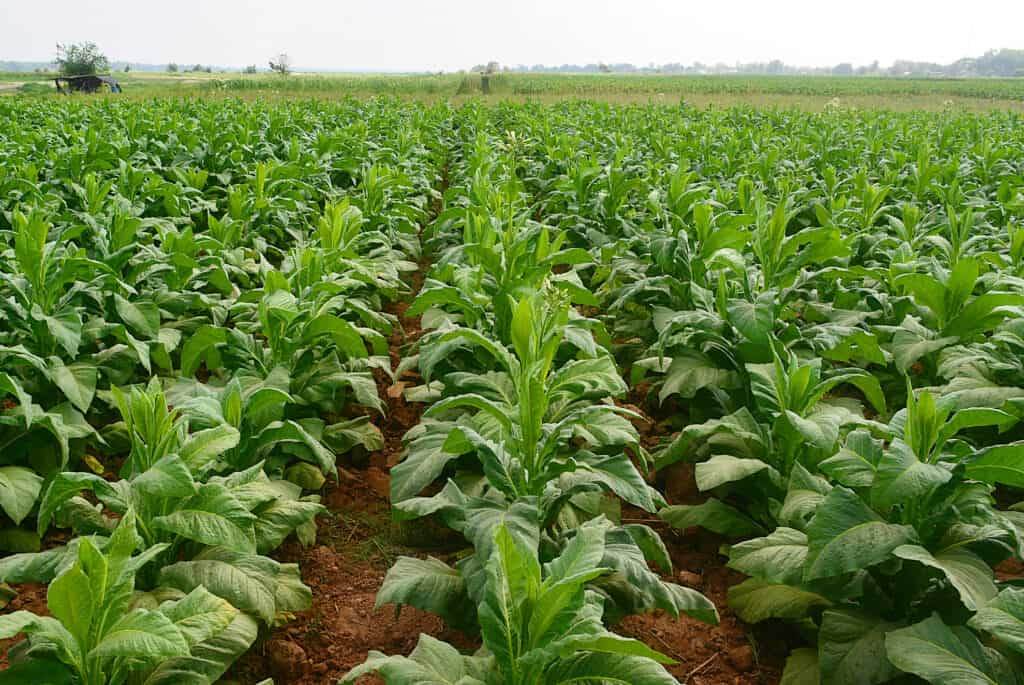
Nicotine is a highly poisonous substance. That is why it is also used as an insecticide.
©iStock.com/surasit bunnet
A huge cash crop for Pennsylvania, farmers grow about 9,000 acres of tobacco each year in the state. An acre of tobacco can generate $5,000 for the grower. And, annually, tobacco crops produce $38.6 million for Pennsylvania. Because of the plant’s resilience to heat and a guaranteed buyer through tobacco companies, tobacco is a money-making crop.
#5. Wheat

Cultivated for 10,000 years, wheat is one of the world’s most important plants.
©zhaojiankang/iStock via Getty Images
In 2023, Pennsylvania grew 17.5 million bushels of winter wheat. As one of the top most valuable crops in the state, wheat makes $103.6 million annually. Global demand for wheat imports has made wheat particularly valuable. With rising populations globally, many countries cannot expand their wheat production, forcing them to import. Nearly 50 percent of wheat produced in the United States is exported.
#4. Apples
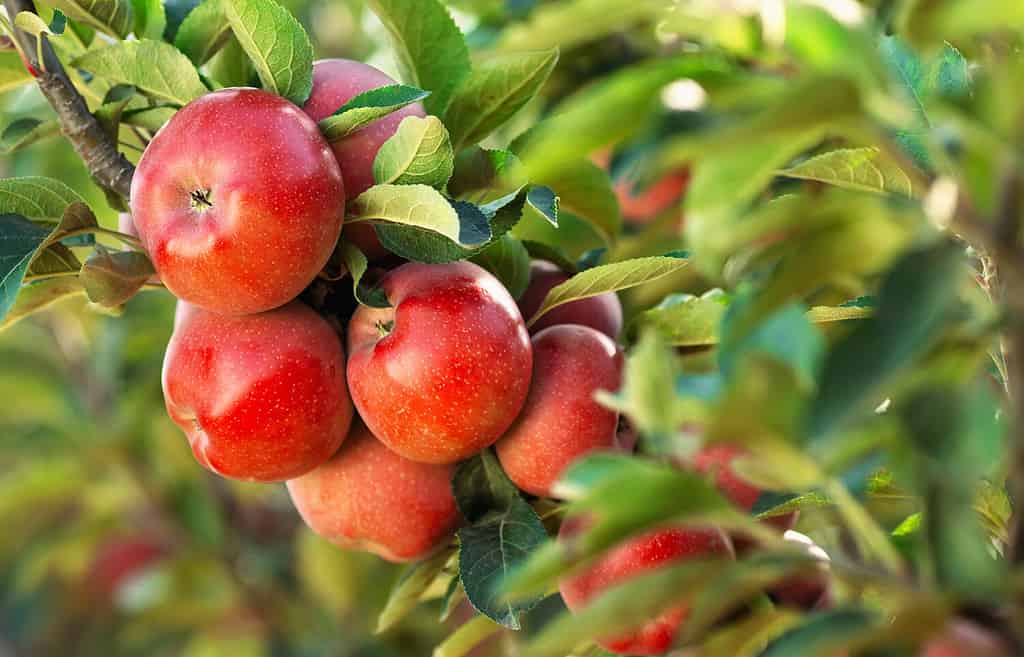
Orchards across the United States grow 2,500 varieties of apples each year.
©David Tadevosian/Shutterstock.com
As the most popular fruit on the market, Pennsylvania produced 556 million pounds of apples in 2021. Out of all the states, Pennsylvania is ranked 4th in apple production. Farmers in the state dedicate more than 21,000 acres to apple orchards. Each year, apples make $129.6 million.
#3. Soybeans

Soybeans are 18% oil and 38% protein.
©branislavpudar/Shutterstock.com
While soybean production is declining in Pennsylvania, the state still grew 25.4 million bushels in 2022. However, that is down twenty percent compared to soybeans grown in 2021. On average, soybeans bring in $381.6 million per year.
The state ranks 14th in the United States for soy meal consumption. Soybeans are processed as soy meal to feed chickens, cows, hogs, turkeys, and other livestock within Pennsylvania. Aquafarmers also utilize soy meal as feed.
#2. Hay
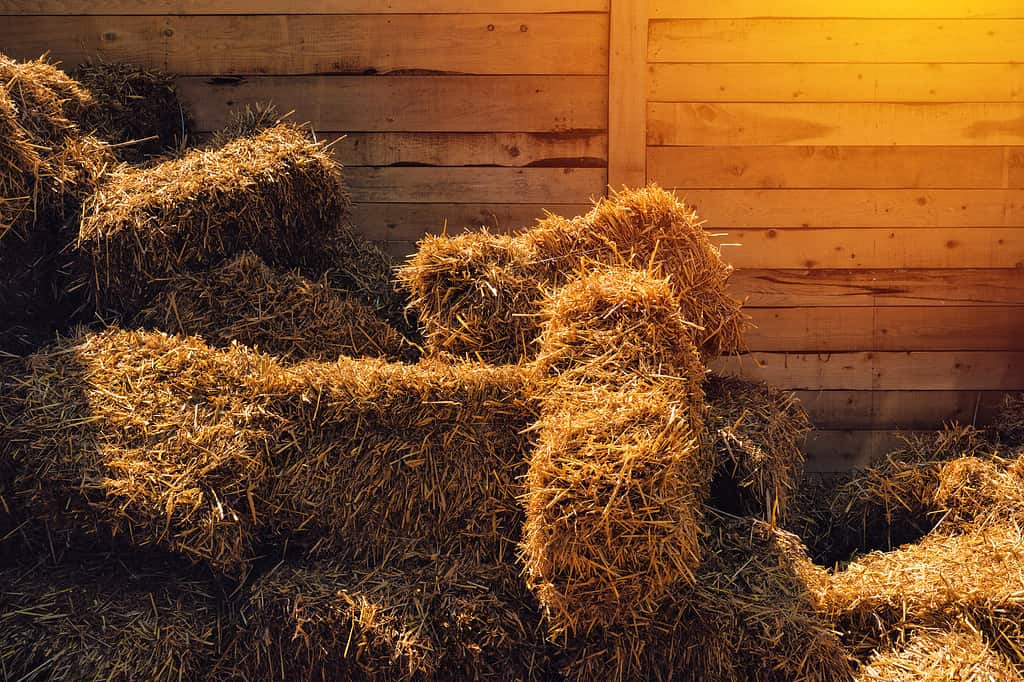
Alfalfa, clover, ryegrass, and timothy are commonly grown for hay.
©stevanovicigor/ via Getty Images
Accounting for about 19 percent of the major crops that Pennsylvanian farms grow, hay is the second-most valuable crop at $729.5 million annually. Growing hay goes hand-in-hand with dairy farming, as farmers typically grow hay to feed their animals. However, corn is easier to grow and is a subsidized crop. So, more farmers are switching to corn, creating a high hay demand.
#1. Corn
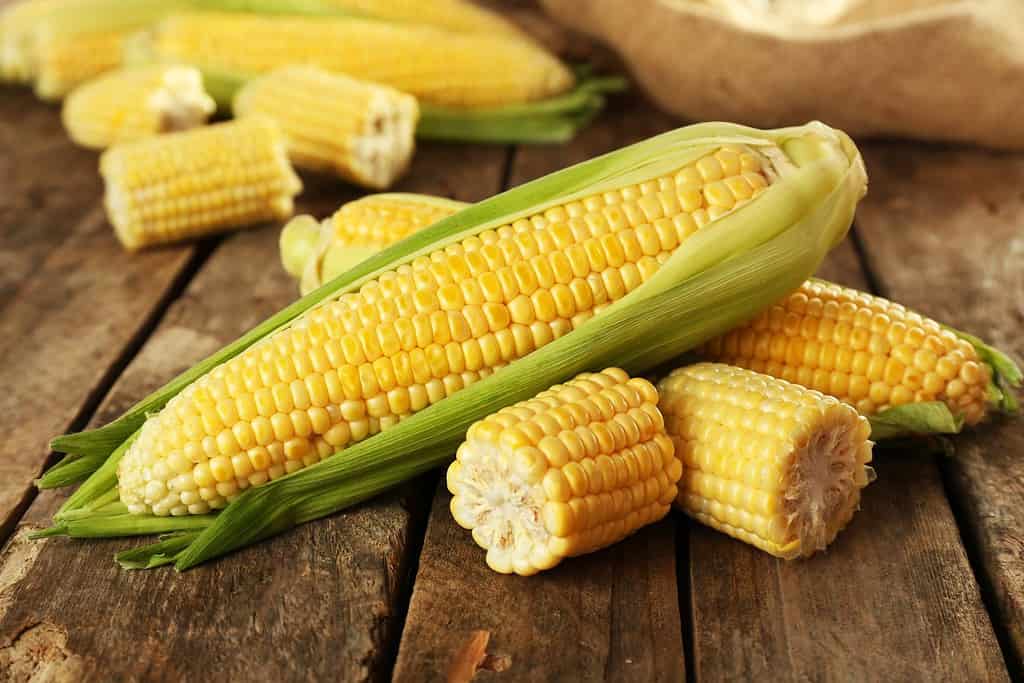
Only 1% of corn planted in the United States is sweet corn.
©Africa Studio/Shutterstock.com
The average yield in Pennsylvania of corn is about 140 bushels per acre, and an estimated 140 million bushels are predicted to be harvested in 2023. Corn generates about $1 billion annually, making it the most valuable crop in Pennsylvania. It is the most popular annual crop grown on farms and is widely used to feed livestock and dairy cows. However, the amount of corn exported to neighboring states and overseas is also increasing. Overall, Pennsylvania is in the top 20 corn producers in the United States.
The photo featured at the top of this post is © CEW/Shutterstock.com
Thank you for reading! Have some feedback for us? Contact the AZ Animals editorial team.







